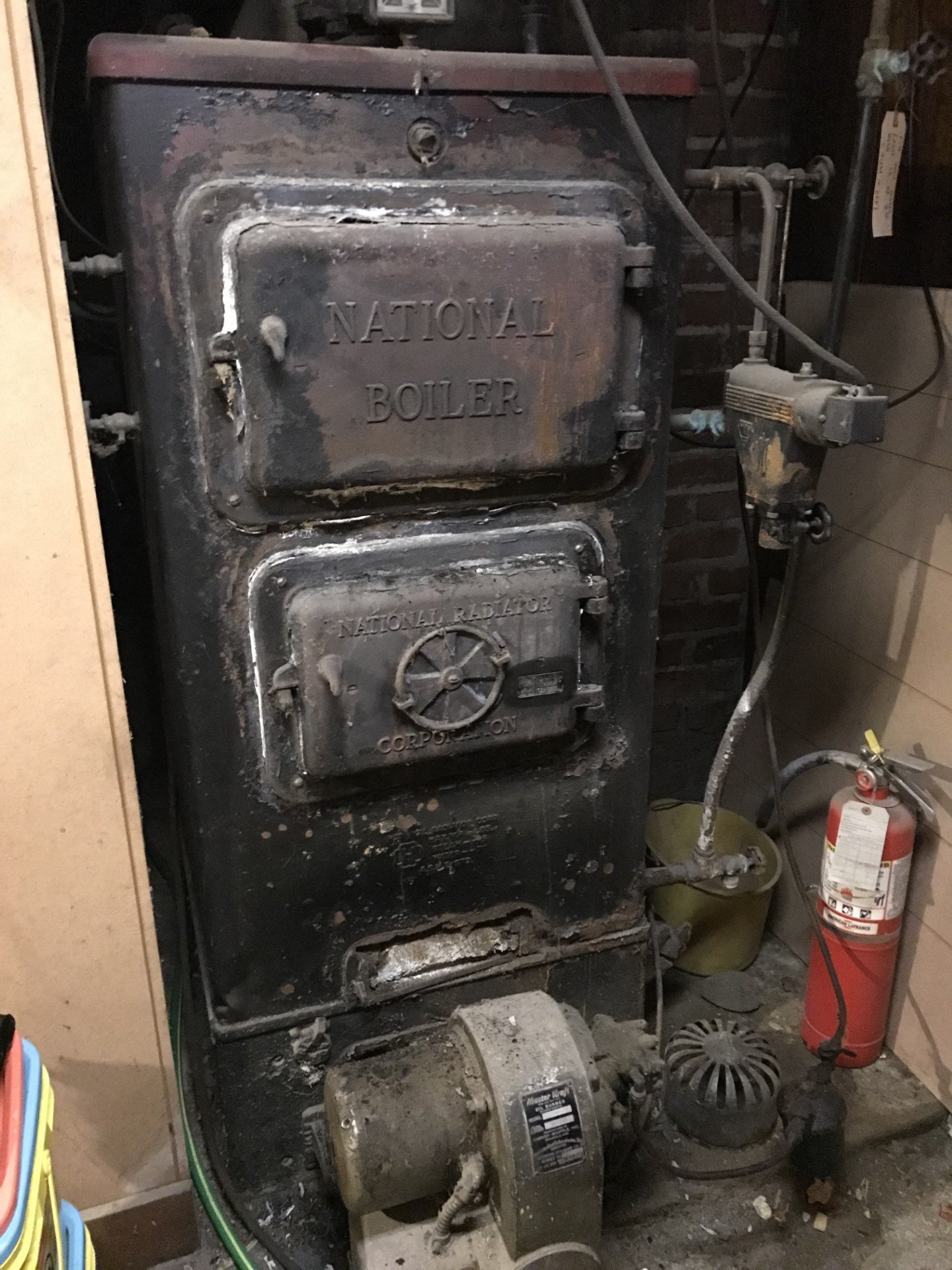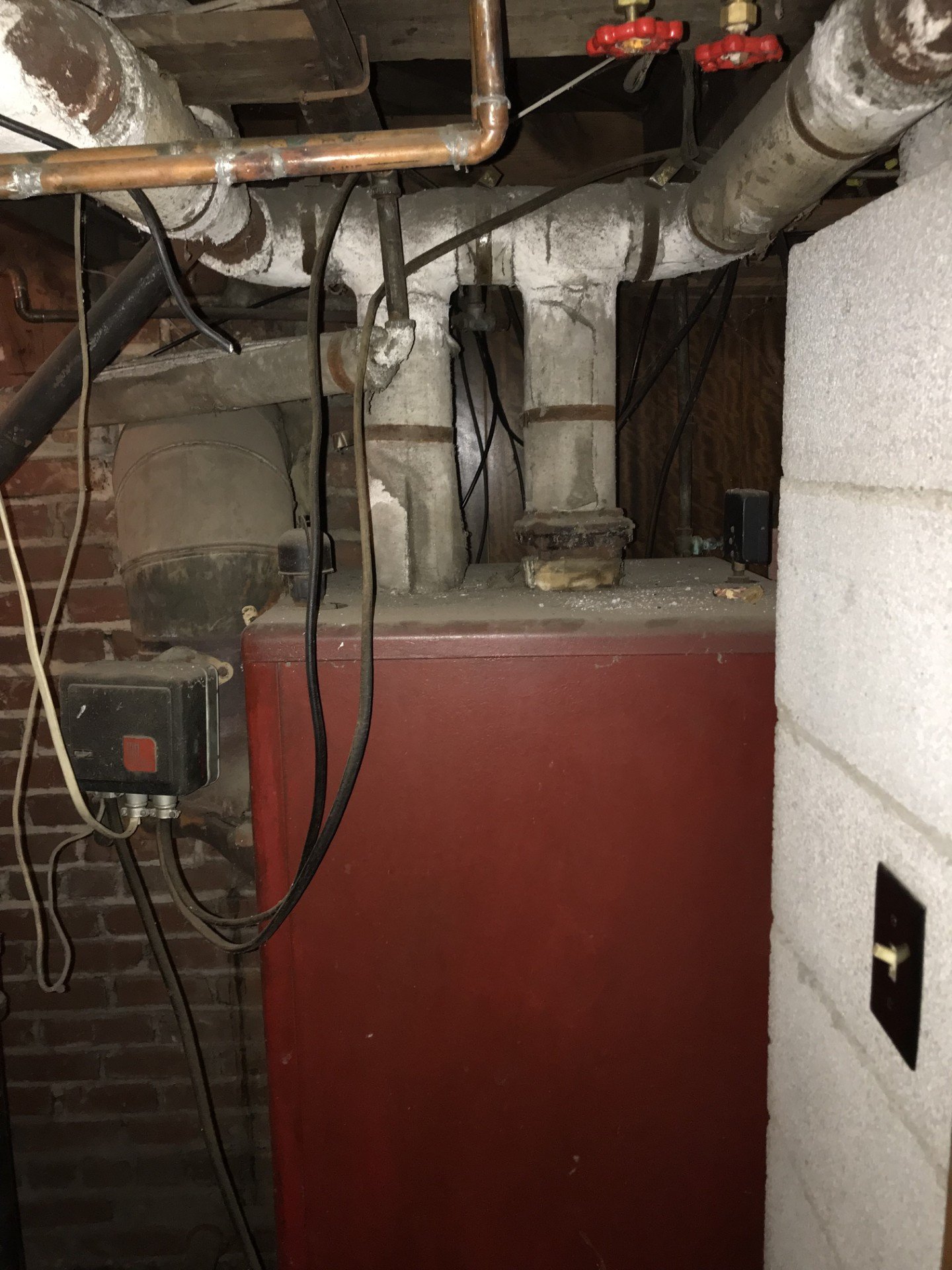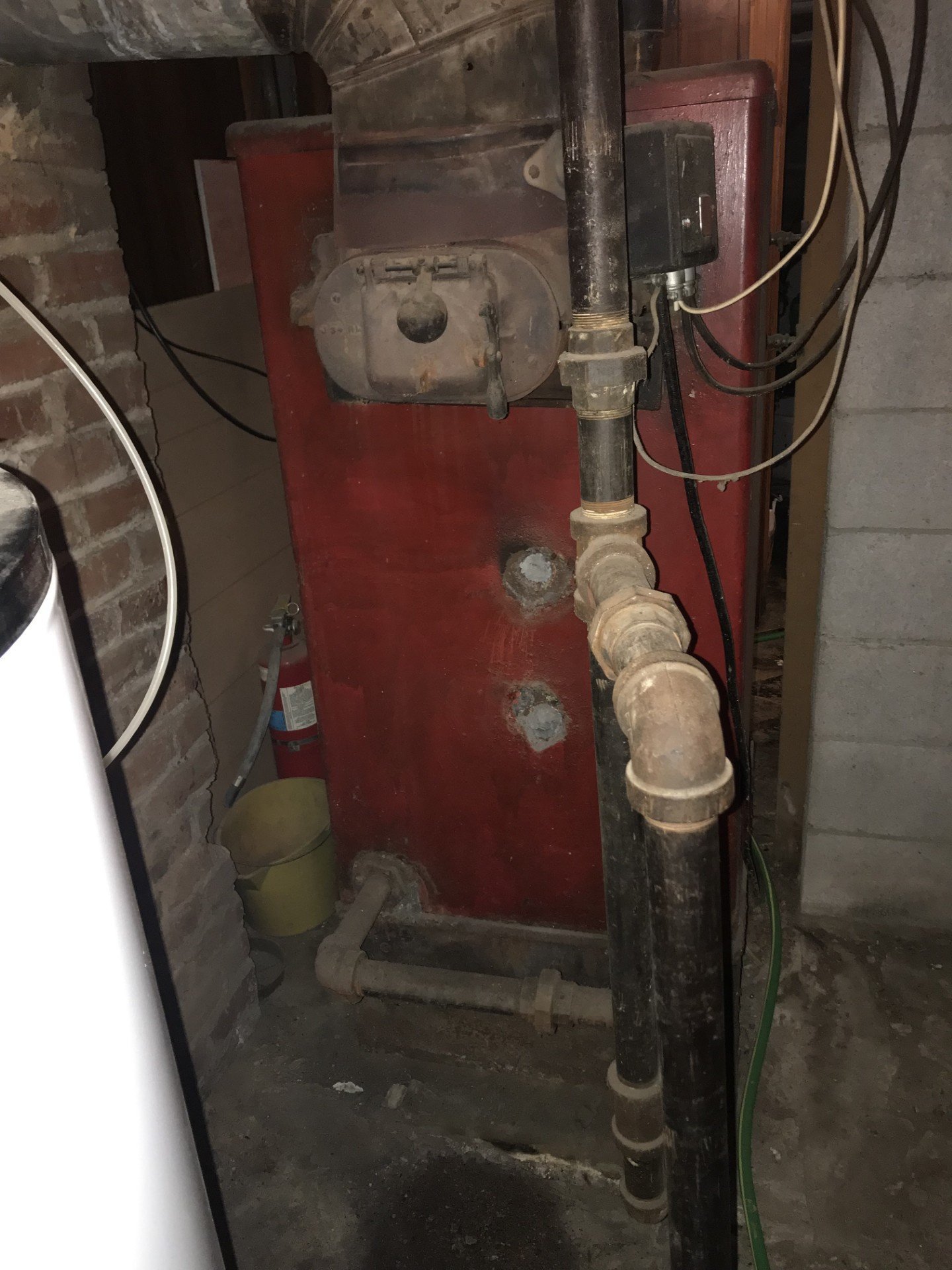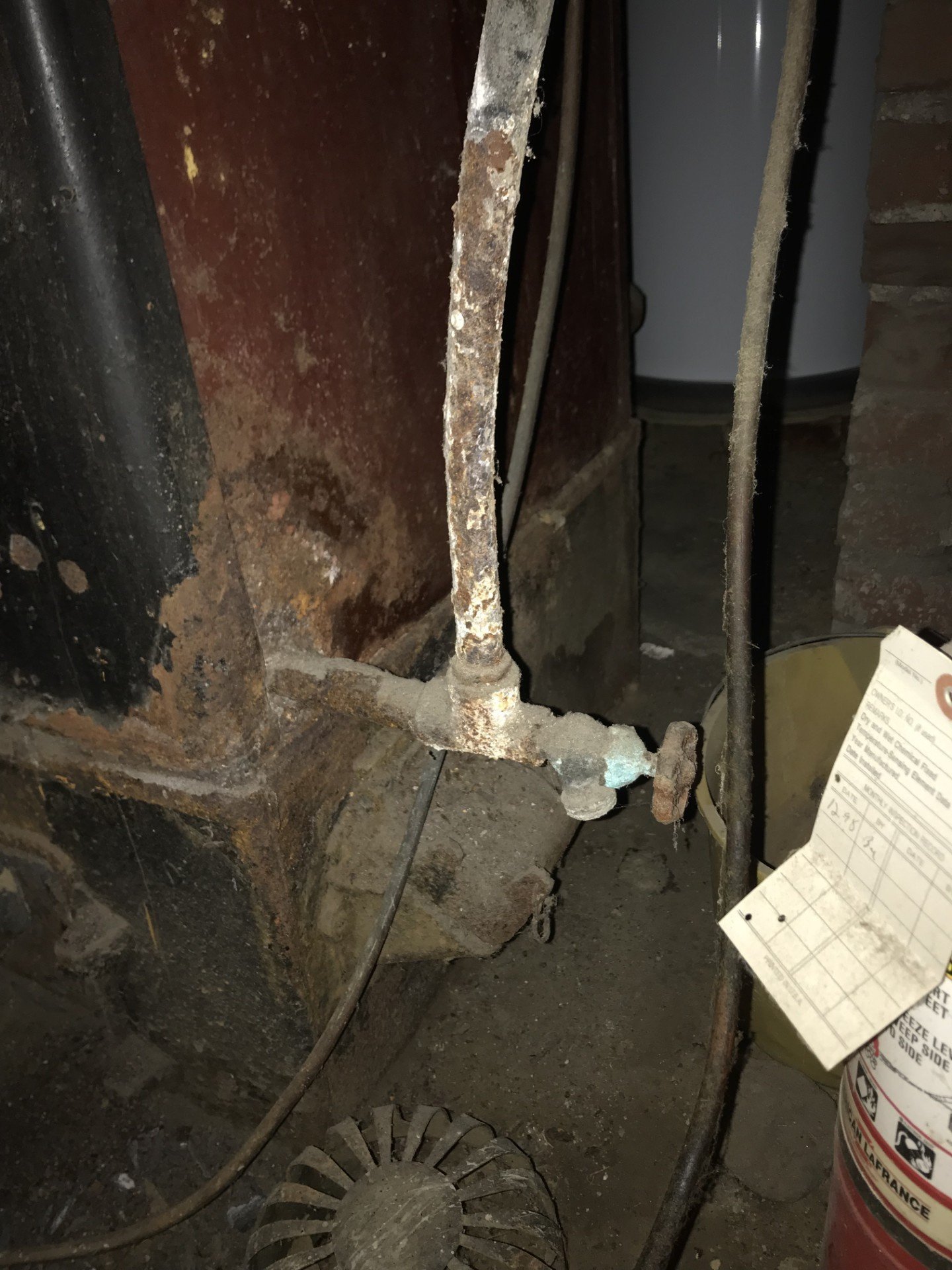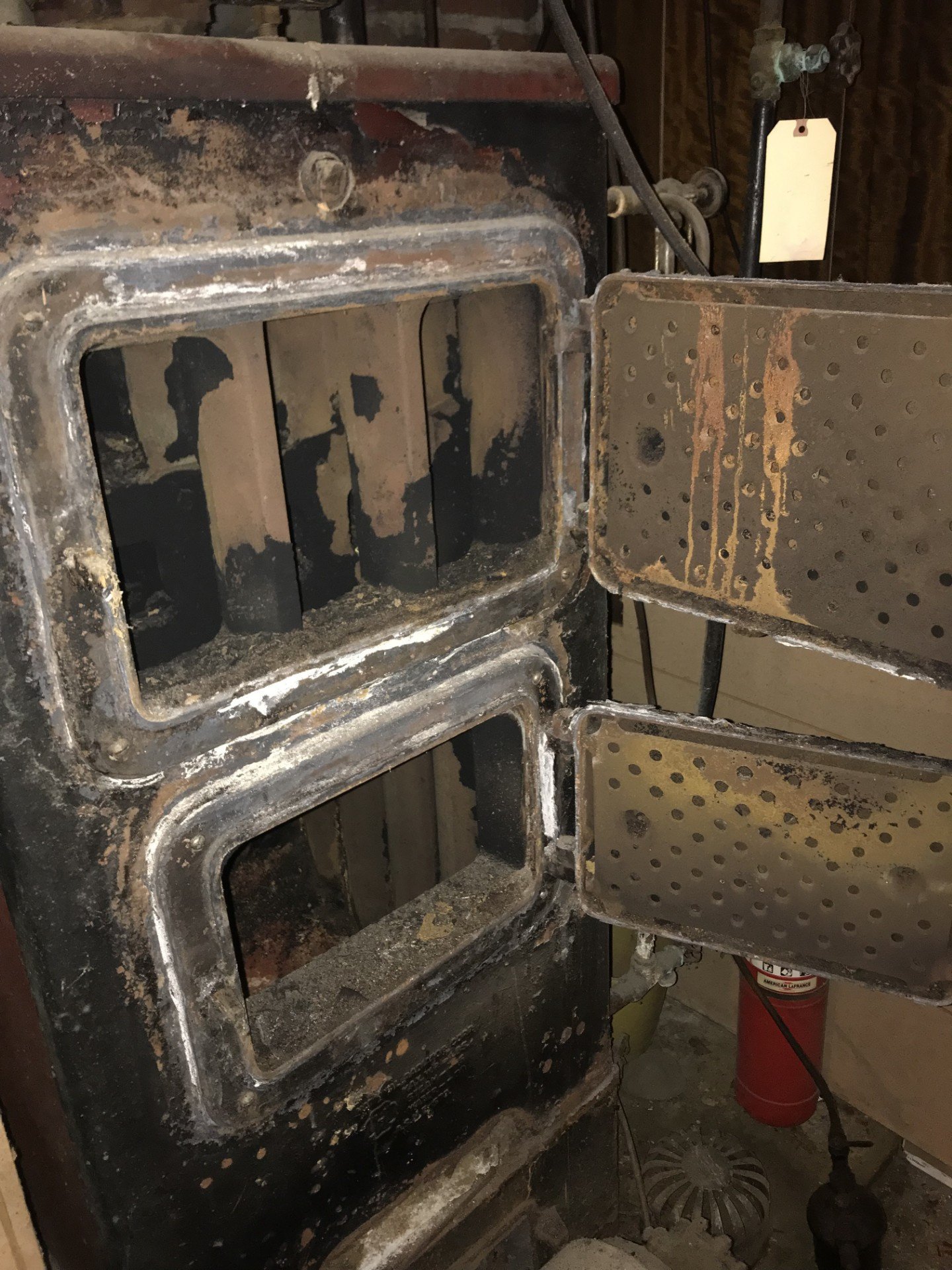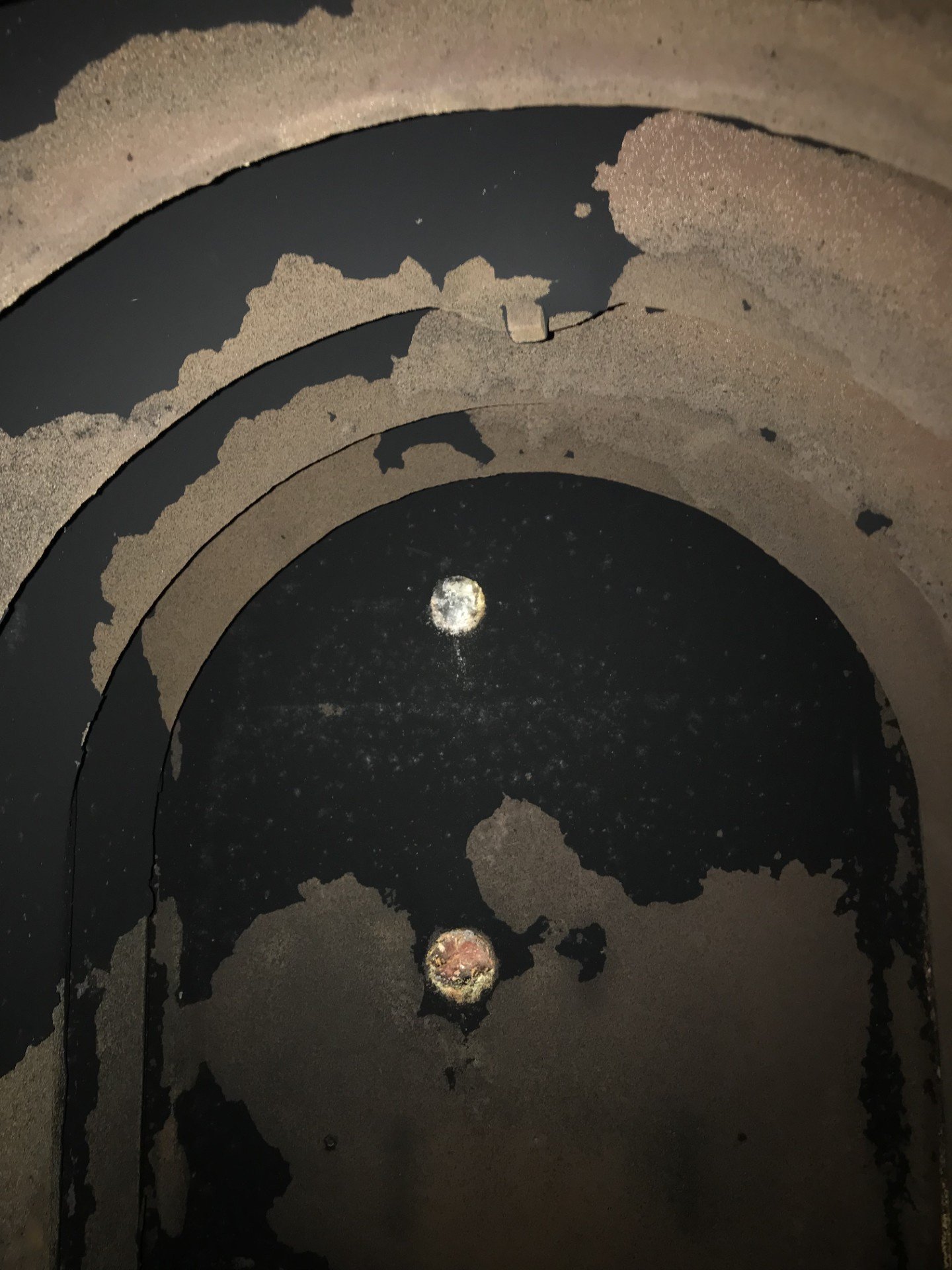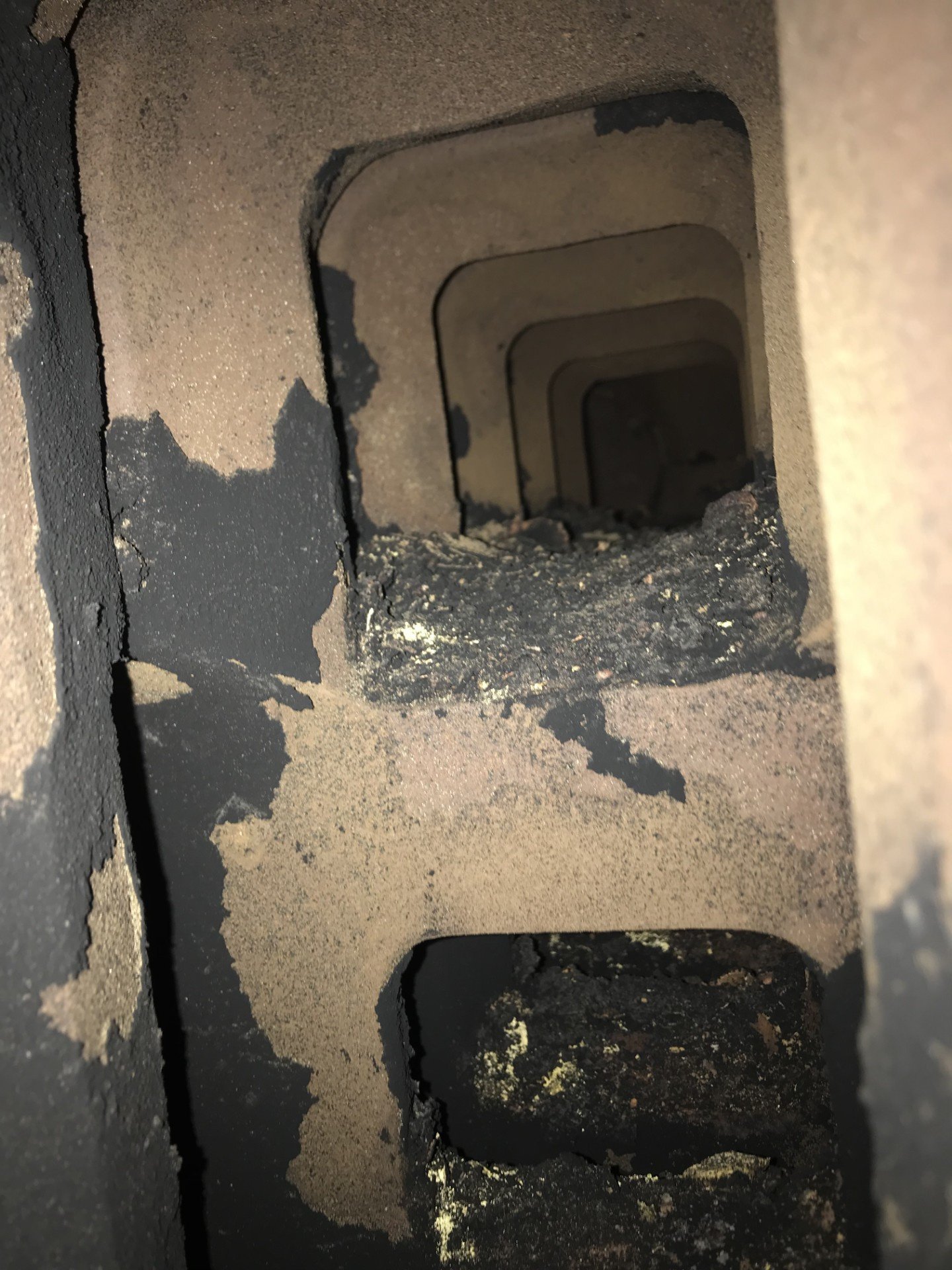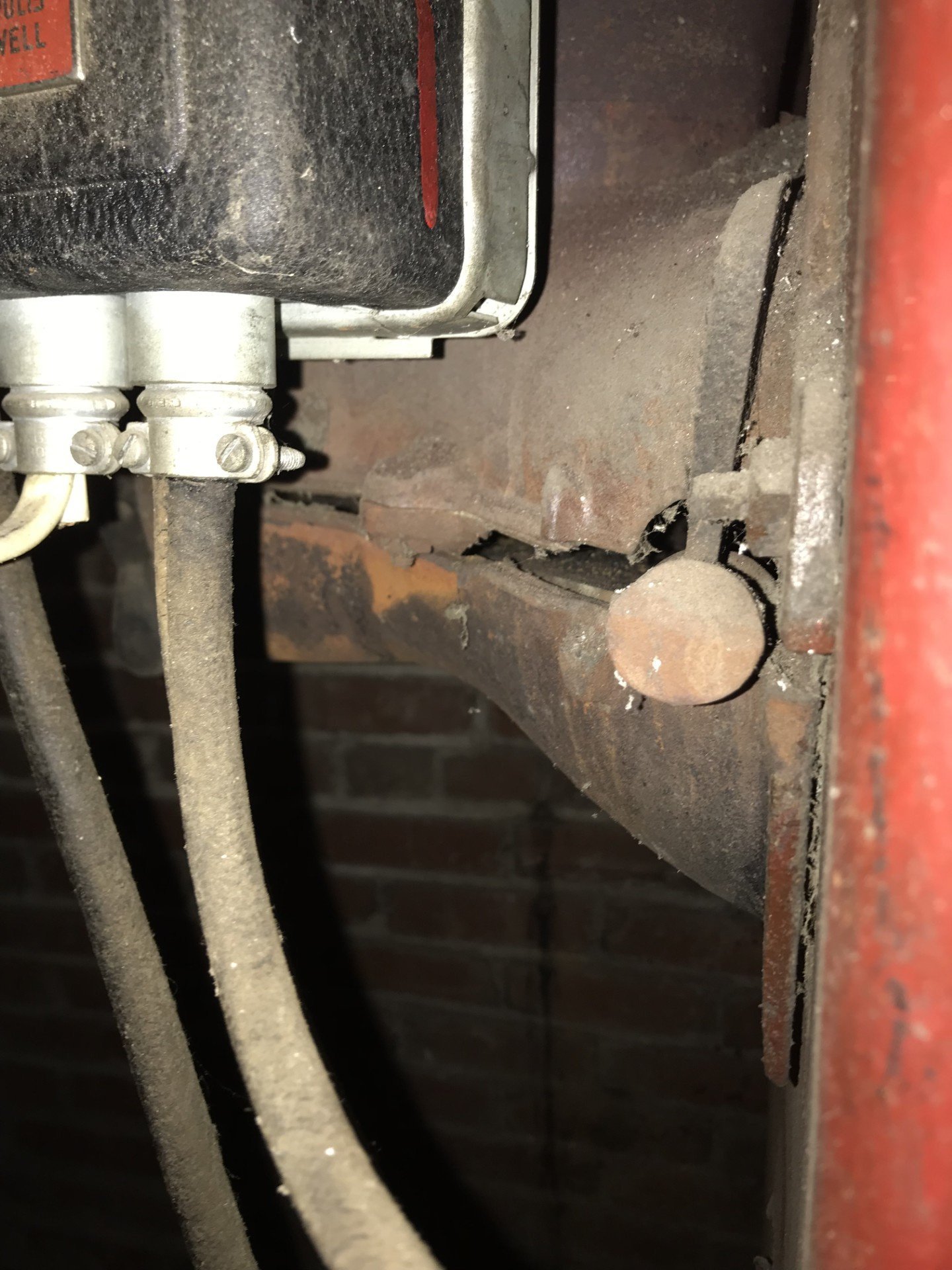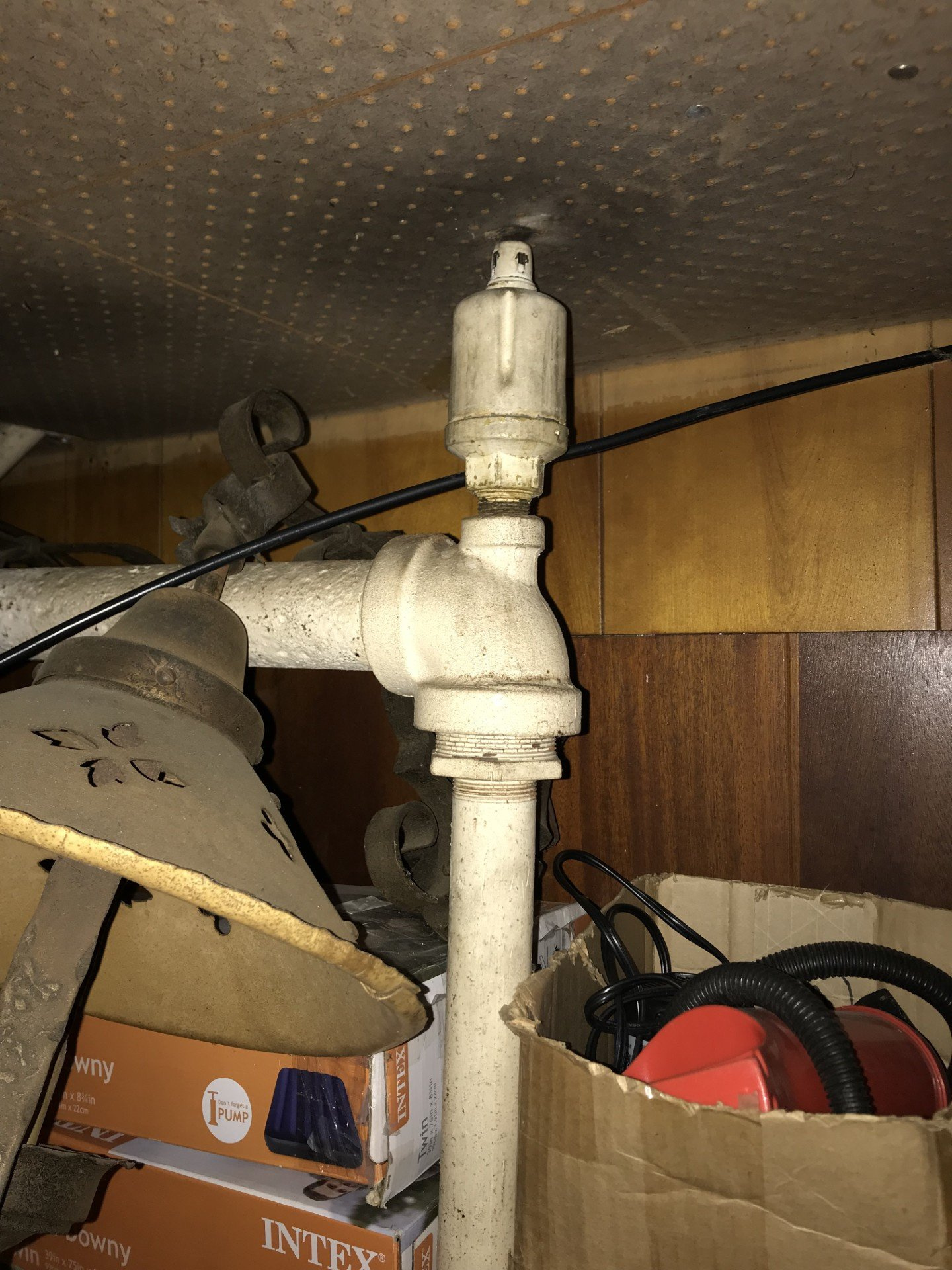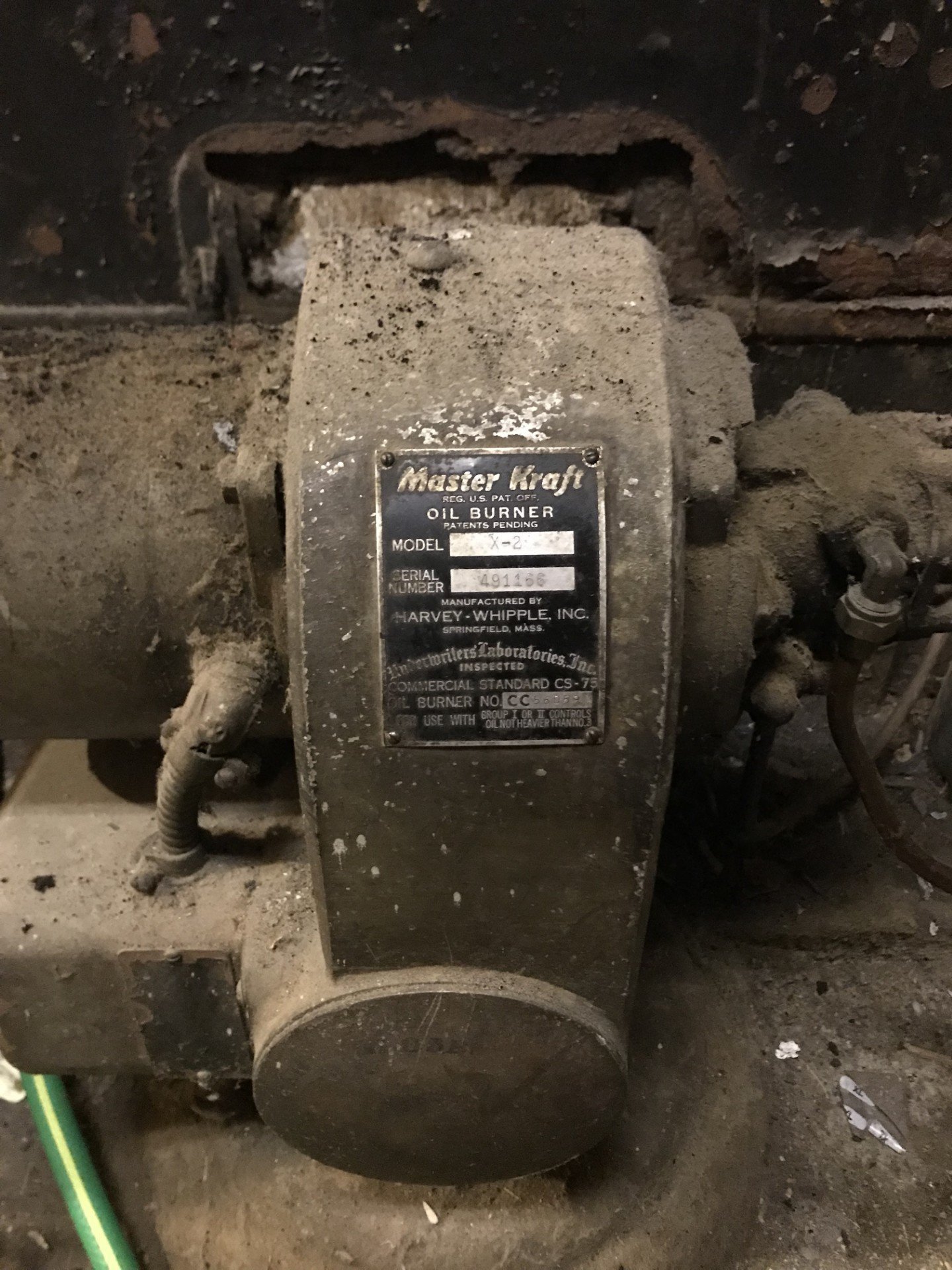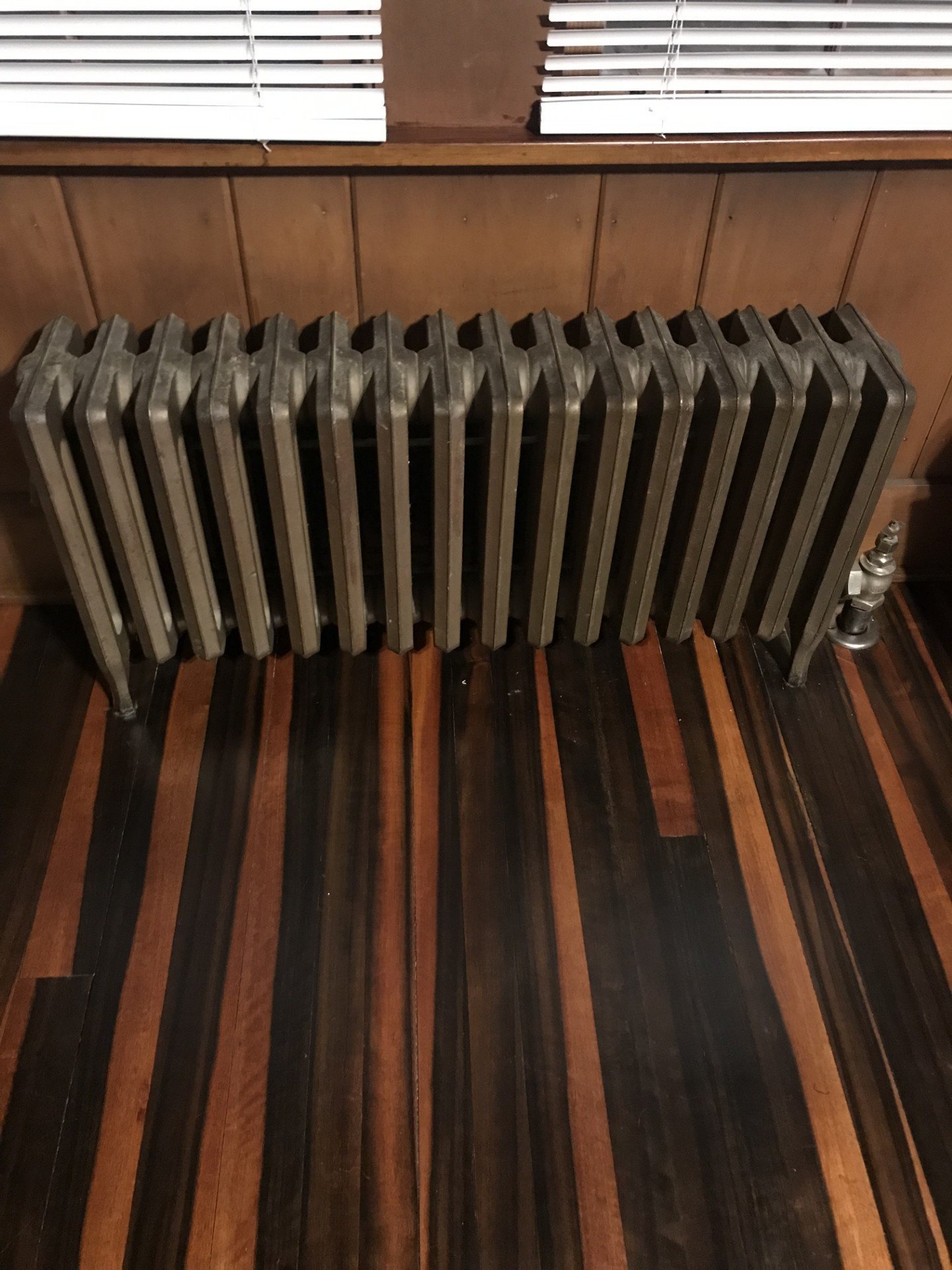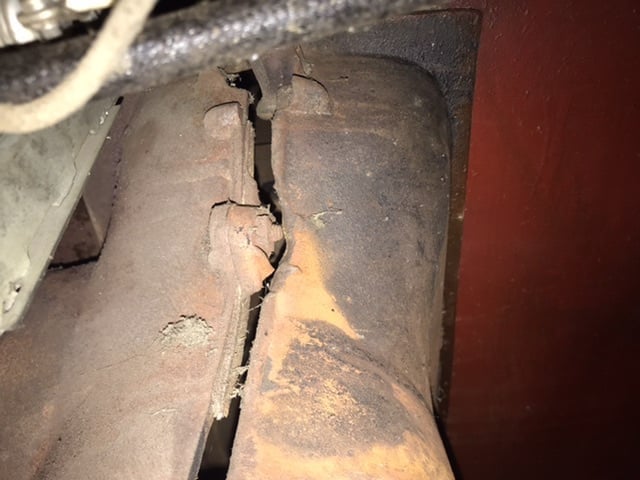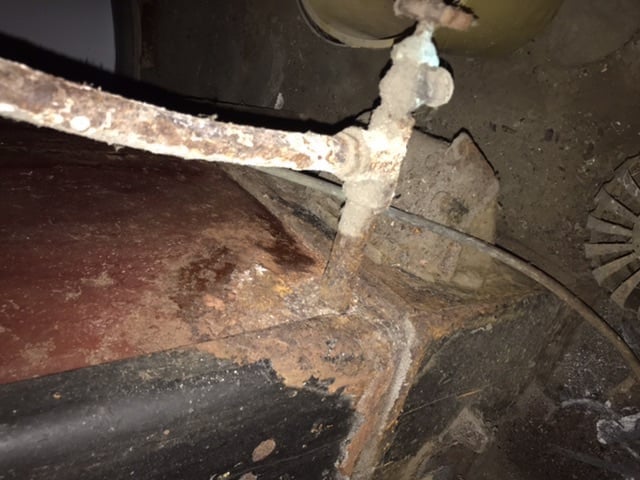National Radiator Corporation boiler- Repair???
I have a National Radiator Corporation steam Boiler. It was coal converted to oil. The metal tag on the front says serial# NC15645 Size: 2-A-6. It has 2 risers. Does anyone has a guess to the age of this?
When we first moved in 30 years ago, we used it the first winter.
Since then we had a heat pump installed. Boiler, pipes, radiators are still there. I've always thought about using steam heat again, but never got around to it. Now that the kids have left house, I am thinking this may be the time.
After doing some checking of the system, I have discovered some items.
- The 1-3/4" return line is under the basement floor, but where it comes up from the floor, it is rusted. It would be possible to run a new return line along the basement wall back to the boiler, however it would be about 60' long with nine 90 degree joints and one T joint.
- The old system had an underground tank. I would need to have a new tank installed. I am thinking in the basement, but outside next to house may be a possibility. I would be afraid it would then become an eyesore.
- The water fill pipe looks very corroded.
- The exhaust pipe in the back has a large 1/2" crack, and the 2 front doors have a 1/8" gap around them.
I don't know if this system can be fixed, or if it is worth fixing, or if I should just look into a new boiler. Either way, it would still need a new return line and new oil tank. I'm afraid this may become an expensive project, and I may have to stick with the heat pump.
With the heat pump, (as everyone knows, it blows "cold" air, my wife freezes with it) I was thinking of using the boiler once it gets really cold, end of Nov, Dec, Jan, Feb. The other months, the heat pump I think would be ok. We also have a wood stove that we have used to help with the heat pump, but now me, 30 years older with some age, I'm not too excited about continuing with using the wood stove.
I've had 2 companies come out and look at the old system with the intention of installing a new boiler. One was only concerned with installing gas forced air. The other over the phone said they worked on boilers and new installations, but when they came out, they said they didn't realize it was steam. They said they only work on hot water boilers. I think they just didn't want to do it .
I live and hour south of Roanoke VA, 1800 sq ft single story wood frame house, no insulation, circa 1940???, county is not really sure of date, partly finished basement.
See attached photos. What are your thoughts???
Comments
-
The boiler and burner appear to be from the 1940s or so; there is no sign of piping alterations so they are probably original to the house.
Those old boilers were originally designed to burn coal and were built like tanks, but it is probably 80 years old, has undoubtedly suffered from corrosion and is not worth repair or additional investment. The burner is obsolete and inefficient; the motor is almost certainly shot and other parts will be hard to find. You would need a new oil tank as well. If the tank is underground, it may have leaked and then hazardous material remediation would be needed.If you want to keep the steam, a new boiler correctly sized for your existing radiators— which the contractor should measure —and installed by a steam specialist would be a better investment. If you can get natural gas service, you will not need a new oil tank. You could run a steam boiler on propane, but that is an expensive fuel in most eastern markets.
Unfortunately few contractors in your region understand residential steam. Have you tried the "find a contractor" link on this site? I believe there is at least one steam specialist in Virginia.
—
Bburd1 -
I wouldn't be surprised if it was originally fired with coal and got that oil burner in the 60's or so, especially being in VA.
0 -
@HM389 , you have seen the light. Heat pumps suck.
I'm thinking 1930s on the boiler. Your radiators were in production between about 1925 and 1938, so they were probably installed at the same time. Yes, that boiler is built like a tank, and with a modern burner and some baffles, it wouldn't be too inefficient. Removing it would be quite involved, especially since it probably has asbestos under the jacket.
If you have natural gas available, you'll want to make the switch.
Find a local contractor who can work with threaded black steel pipe (NOT mega-press). If they're not that familiar with steam, maybe you could talk someone into coming there to consult.
All Steamed Up, Inc.
Towson, MD, USA
Steam, Vapor & Hot-Water Heating Specialists
Oil & Gas Burner Service
Consulting0 -
Isn't @Ironman down that way?
I like the "Master Kraft" Harvey Whipple oil burner made in Springfield, MA 6 miles from me. Haven't seen one of those in a while.
I am afraid the price to replace that will be shocking if you can find someone to do it. Are your Heat Pumps 30 years old? Did they work better when new?
0 -
"For use with oil not heavier than No. 3".
No. 3 oil hasn't been available in many decades. Does anyone know when it was discontinued?—
Bburd0 -
Natural Gas is not an option, and I'm not a fan of propane. Oil is what I'd prefer. I've looked at the "find a Contractor" and the nearest one is 4-1/2 hrs away.
One of my biggest obstacles is replacing the return line. It's so long and would require so many 90 degree angles. What are your thoughts on changing from a 2 riser system to a 1 riser system? If I changed to new 1 riser system, I could then connect the 2 end points of the 2 lines (where the air valves are) They are only 15 feet apart. I then could move the air valve and return line somewhere closer to where the original 2nd riser started, and therefore closer to the boiler. This would eliminate the need to run so much piping for the return line.
0 -
keep it. i love fixing old stuff so im biased.
this boiler will outlive you. concider it as part of your legacy.
to start with fix the easy stuff that you see rust around. if those areas are not damagaed beyond repair, the rest is "easy".
crack around vent can be welded. just remove the part and bring it to a specialist - knowing they are working on an antique, they might get excited and give you break on price. if not, you should be able to make something out of sheet metal.
just install new oil tank in the basement. for all reasons mentioned above, dont touch the underground tank.
burner you will have to replace but a whole assembly is only like $700.
this is a perfect scenario as you do have a "working" heat pump, so you can take your time and dont have to stress inevitable 2steps forwards-1 step back.
0 -
patrykrebisz, what about the need for a new return line? Also, could 2 front doors be welded?
0 -
i didnt see any need for welding on the doors. you can get fireproof rope to attach to the door (as a seal) from Mcmaster-Carr.
again, if you want to rebuild this boiler yourself, then totally doable. if you are thinking of hiring someone, it will be insanely expensive.
0 -
Still would need to address return line issue.
0 -
don't worry about the length of the wet return as long as it is the right size it will be fine. you can do it in copper below the water line.
0 -
normally the doors would just be sealed with furnace cement. how much is sealed is something that has to be decided by whoever is tuning the burner, that air has to be accounted for in setting the draft.
btw, that white stuff around the doors is very likely asbestos furnace cement.
0 -
I'm not sure that there is a crack in the vent connector vs there are 2 pieces that come apart for cleaning and the bottom part isn't secured properly.
0 -
Looking more closely at the vent connector, it does look like it is cracked. You can see where they are still screwed together in the park it’s broken.
Looking at the water intake pipe going into the boiler, It’s very rusted, how would this need to be replaced? Take the entire red outer boiler jacket off?
0 -
you probably will have to take the jacket off to replace that nipple. you may need to cut a little wedge out of it by cutting almost to the threads in 2 places and knock it out with a small chisel then unscrew the remaining part. if you're lucky I would fist try cutting the fitting off it then inserting a rod or smaller pipe in it that fits fairly tightly inside so it doesn't collapse and try unscrewing it with a pipe wrench. It may unscrew, it may shear off.
There may be one of several forms of asbestos insulation inside the jacket.
0 -
-
I’m starting to think like EBEBRATT-Ed. I don’t want to waste a lot of money on something that may give me continual problems over the years.
If I give my current radiator sizes and the specs, is this something someone on this forum can suggest a boiler? There are no local specialist in my area, the nearest one on this forum is 4-1/2 away
0 -
Certainly
0 -
if you don't know the edr of the radiators, post pictures and dimensions, someone can identify them
0 -
My radiators all are tubular, with 5 tubes, 20" tall, sections are: 11, 18, 18, 16, 11, 12, and 2 cast iron baseboards, 60" long and 42" long. One bathroom doesn't have a radiator, if I put on in there, it would be 18" long. I calculated the EDR of my radiators and came up with 258.52 EDR, if I add the projected bathroom it comes to 263.62 EDR. If I multiply this by 240 it comes to 61,920 or 63,120 (with projected bathroom)
If my math is correct, I would need a oil fired steam boiler with a DOE heating capacity of 62MBH or 63MBH.
I found the following:
Weil-McLain has a SGO-3 with a 114 DOE heating capacity
US Boiler thru Burnham has a MegaSteam MST288 with 92 DOE heating capacity.
Are these too big? Is there anything else out there smaller? Any other recommendations?
0 -
I'd go for the MegaSteam- it's more efficient and, like your National, it's built like a tank.
All Steamed Up, Inc.
Towson, MD, USA
Steam, Vapor & Hot-Water Heating Specialists
Oil & Gas Burner Service
Consulting0 -
" What are your thoughts on changing from a 2 riser system to a 1 riser system? If I changed to new 1 riser system, I could then connect the 2 end points of the 2 lines (where the air valves are) They are only 15 feet apart. I then could move the air valve and return line somewhere closer to where the original 2nd riser started, and therefore closer to the boiler. This would eliminate the need to run so much piping for the return line. "
A few issues with this. You probably want to use both risers to minimize the steam velocity leaving the boiler.
The main that would be disconnected from the boiler is probably pitched the wrong way for what you want to do. Both mains probably pitch down to the far end and the return brings the condensate for both mains back to the boiler.
The main pipe size (being changed to a single main) may not be large enough to properly supply the added EDR load.
National - U.S. Gas Boiler 45+ Years Old
Steam 300 SQ. FT. - EDR 347
One Pipe System0 -
Not really. The SGO-3 is even bigger. Go for the MegaSteam.
All Steamed Up, Inc.
Towson, MD, USA
Steam, Vapor & Hot-Water Heating Specialists
Oil & Gas Burner Service
Consulting0
Categories
- All Categories
- 87.3K THE MAIN WALL
- 3.2K A-C, Heat Pumps & Refrigeration
- 61 Biomass
- 429 Carbon Monoxide Awareness
- 120 Chimneys & Flues
- 2.1K Domestic Hot Water
- 5.8K Gas Heating
- 114 Geothermal
- 166 Indoor-Air Quality
- 3.7K Oil Heating
- 77 Pipe Deterioration
- 1K Plumbing
- 6.5K Radiant Heating
- 395 Solar
- 15.7K Strictly Steam
- 3.4K Thermostats and Controls
- 56 Water Quality
- 51 Industry Classes
- 50 Job Opportunities
- 18 Recall Announcements
